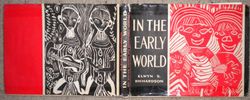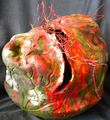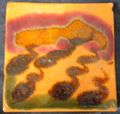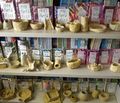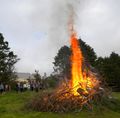Warrington School/Curriculum/In The Early World - Pottery Unit
From WikiEducator
Contents
Visual Arts Achievement Objectives
Using Elwyn S.Richardson's In The Early World (published 1964) as a stimulus, wherever possible try and recreate some of the ideas contained in this
Pottery
The school paddock has a large bonfire ready for setting ablaze, burning tree trimmings and firing pottery at the same time, is more sustainable than just a burn off
Objective 1
- Investigate the purpose of objects and images from past and present cultures and identify the contexts in which they were or are made, viewed, and valued
- Viewing the photos from books and web discuss with class above ideas
- Hold and sketch pieces of modern pottery analysing above ideas - share
- Explaining why certain pots were made (see gallery of pot photos)
Elwyn began to gather clay from his local surrounds with pupils, they mixed it up and experimented until it dried right, "we found bottoms cracked unless we turned the pots early in the piece"
Visit a local potter, discuss pots and glazes, Internet sites, phone a parent artist, Trade Me purchase of "In the Early World", mailbox 4 days, bags of school clay located
Objective 2
- Explore some art-making conventions, applying knowledge of elements and selected principles through the use of materials and processes.
- With the whole class share, demonstrate and practice pinch, slab, coil pot making skills
- View a pit firing video
- Storing and drying pots
Elwyn and his students - prepared the clay, added local plants, thumping down of coils, creating rhythmic patterns, growing pots, trimming to form, and bonging a wall to correct contour.
Objective 3
- Develop and revisit visual ideas, in response to a variety of motivations, observation, and imagination, supported by the study of artists’ works.
- With the class share each others progress
- Talk about our pots
- What they represent
- What we were attempting to show with them
Objective 4
- Explore and describe ways in which meanings can be communicated and interpreted in their own and others’ work.
